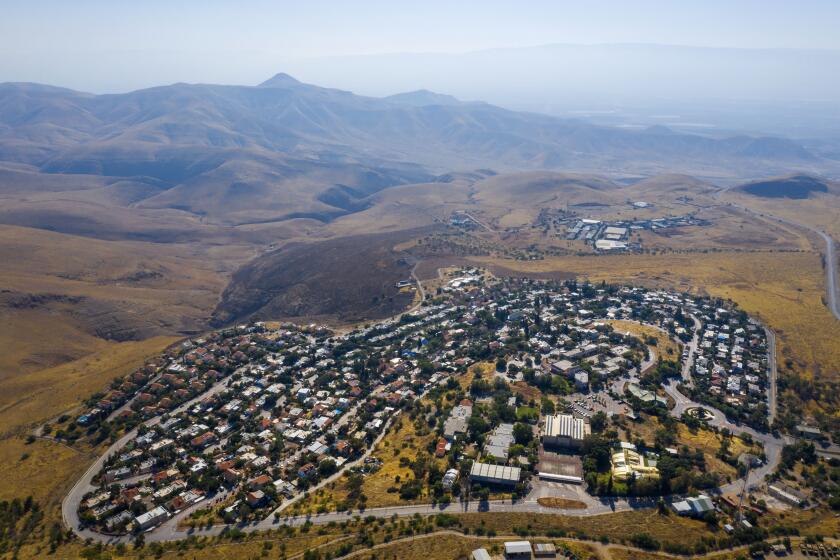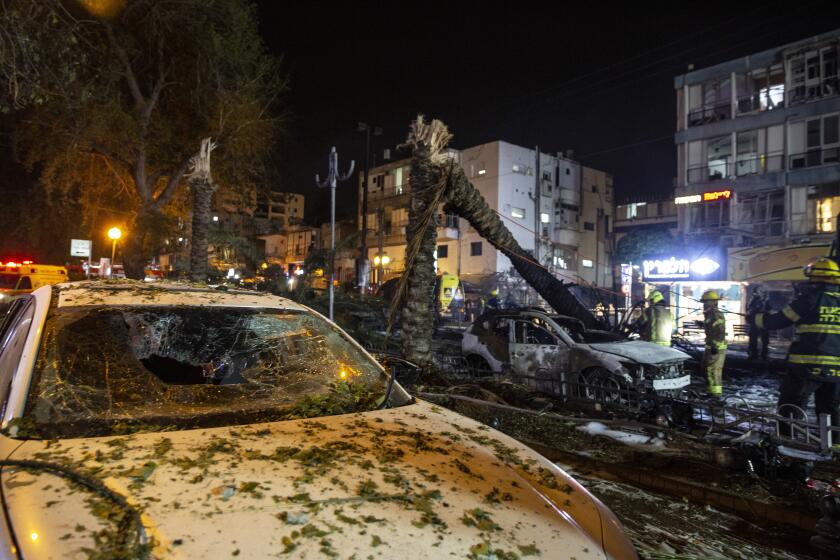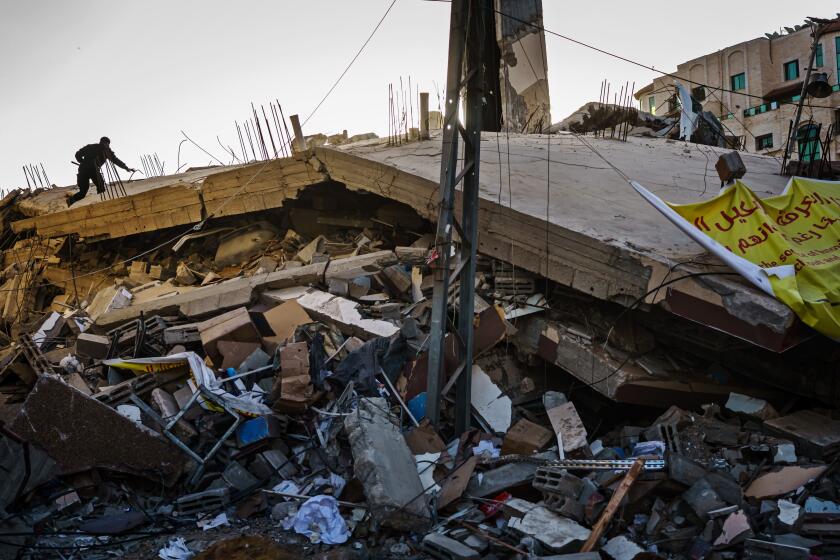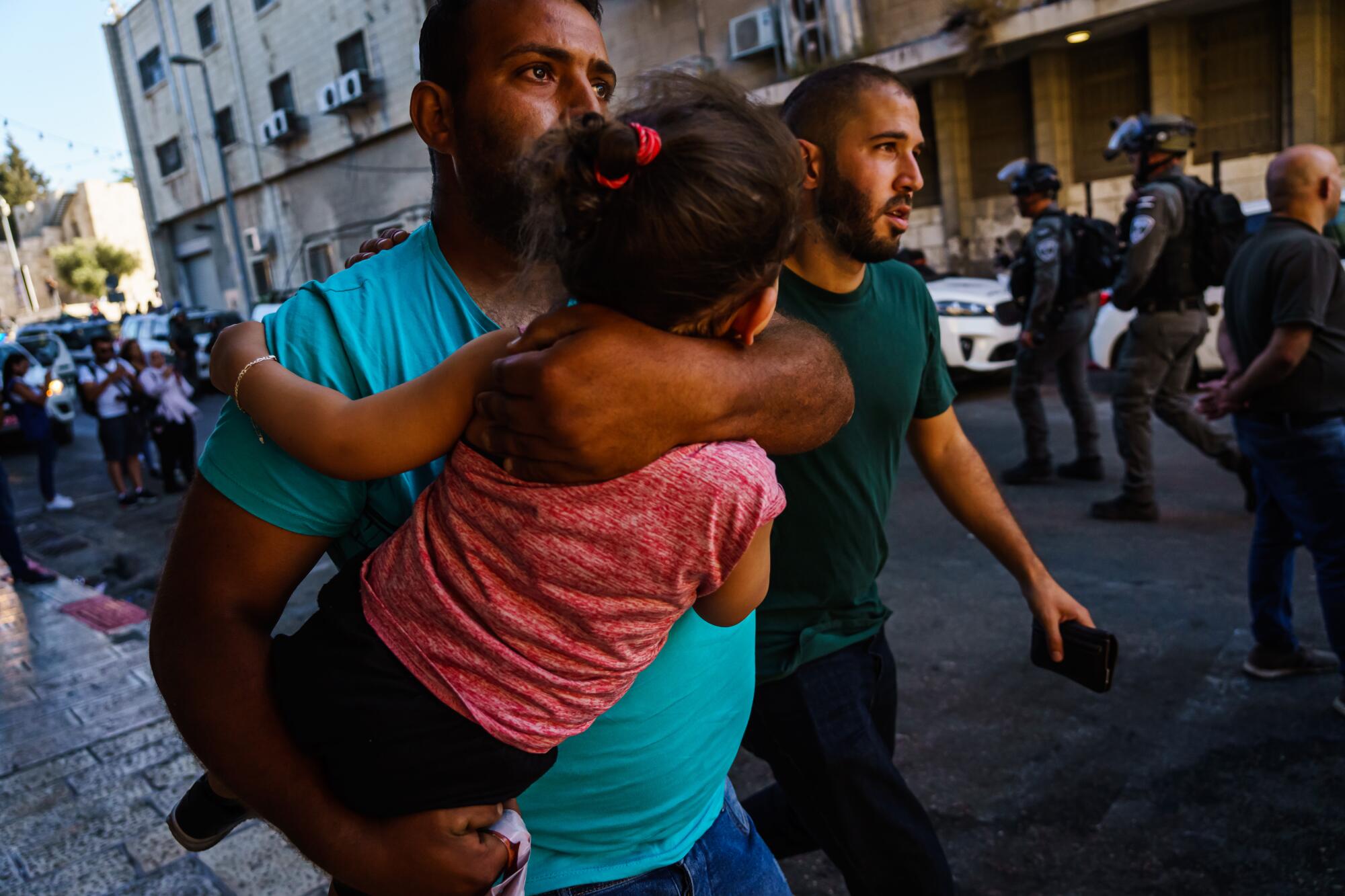
- Share via
JERUSALEM — A cease-fire in the Gaza Strip usually means calm across Israel. Not this time.
Near the West Bank city of Ramallah, Palestinians enraged over the occupation of the territory continue to face off against security forces firing tear gas and rubber bullets. In Lod, Jaffa and other mixed Israeli cities, Palestinian residents warily eye their Jewish neighbors — and vice versa — as they walk streets that were battlegrounds weeks ago. Every day in East Jerusalem’s Sheikh Jarrah district brings fresh confrontations between Israeli riot police and Palestinian activists.
The war between Israeli forces and Hamas militants in Gaza was stilled after a May 21 cease-fire. But tensions between Palestinians and the state of Israel have remained and — together with the 11 days of bloodshed — have catalyzed a newfound Palestinian solidarity that could mark an important new moment in the Mideast conflict, activists say.

For years, Palestinians have been subject to geographical and political divisions that have created vast differences between those living under the Palestinian Authority’s aegis in the occupied West Bank, under Hamas’ control in Gaza or under Israeli government rule as citizens of Israel, not to mention the Palestinian diaspora spread across the Middle East and beyond.
But the clashes in East Jerusalem, the sectarian violence in Israeli cities and the fighting in Gaza have narrowed those divisions, said Adrieh Abou Shehadeh, a Palestinian citizen of Israel who lives in Jaffa, outside Tel Aviv. Palestinians from all regions awoke to what they saw as a common thread running through their struggles: their quest for recognition and equality, and Israel’s resistance to it.
“What Israel did recently was its biggest strategic mistake: It showed Palestinians the reality, that it deals with all of us this way … that we’re all unequal,” said Abou Shehadeh, the founder and curator of Hilweh Market, a Palestinian artisanal boutique.
“Israel created a hierarchy for Palestinians from different places. But the way it dealt with us in this time, there was no difference. It showed us the cause is one.”
As rockets from Gaza streaked overhead, Arabs and Jews fought each other on the streets below.
Mariam Barghouti, a Ramallah-based writer and researcher, agreed that the latest crisis has helped galvanize unity of purpose among Palestinians across the Holy Land.
“It’s pressuring all representatives to try to listen to the Palestinian population and respond to the reality on the ground,” she said. “This isn’t just a problem of negotiations, but a problem of the practices being faced by us as Palestinians.”
That growing sense of solidarity among Palestinians is playing out against the backdrop of political turmoil in Israel, where a new government is all but certain to take power in coming days.
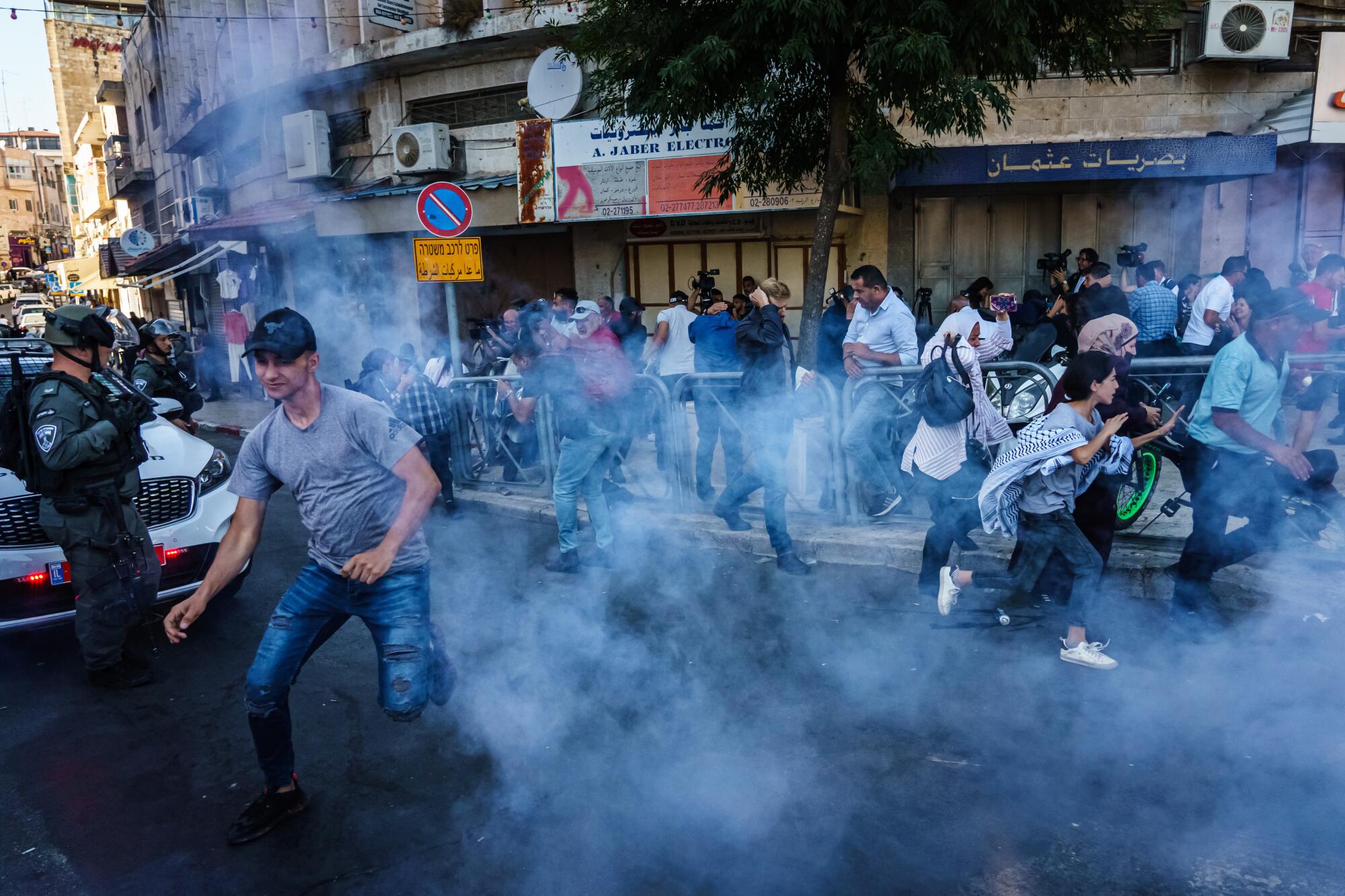
But because the incoming ruling coalition draws from across the Israeli political spectrum, it is not expected to achieve consensus on issues such as reviving talks over the creation of a Palestinian state. In a historic first, an Islamist party will also participate in the new government, in what it says is a bid to redress government discrimination against Palestinian-dominated municipalities, as well as legal practices targeting Palestinians living within Israel’s borders.
Activists say American discourse on Israel is changing as communities and progressive politicians throw their weight behind the Palestinian cause.
Palestinians say there is much to redress. For proof, many look to East Jerusalem and the neighborhood of Sheikh Jarrah, where Jewish settler groups have fought to take over houses from longtime Palestinian residents following a court ruling.
Israeli authorities dismiss the battle as a “real-estate dispute.” But Palestinians insist it’s part of a wider effort to expand Jewish control that amounts to a form of apartheid — a controversial term that has gained currency among Palestinians to describe their experiences and that Israel’s own leading human-rights group, B’Tselem, has adopted.

Drawing particular ire is a 2018 law defining Israel as the nation-state of the Jewish people, which acknowledged only Jews’ right to self-determination in the Holy Land, and the removal of Arabic as an official language of the state, even though Arab citizens of Israel account for one-fifth of the country’s population.
“These are systemic practices that we’ve seen in Haifa, Tel Aviv, Lydd [the Palestinian name for Lod] and Jaffa, turning Palestinians into tokens that are only symbols of Israel’s democracy, instead of what is actually happening: the erasure of Palestine and the Palestinians,” Barghouti said.
A leading Israeli human rights group has begun describing both Israel and its control of the Palestinian territories as a single ‘apartheid’ regime.
In the Old Quarter of Lod, a city of 77,000 people 10 miles southeast of Tel Aviv, clashes erupted between Jewish ultra-nationalists and Palestinian Israelis last month as the war between Hamas and Israel inflamed ethnic passions. Two residents were killed: a 32-year-old Arab man, Musa Hassuna, and a 56-year-old Jewish man, Yigal Yehoshua.
The city’s mayor, Yair Revivo, has been accused of fomenting division. He said recently that crimes by Palestinian residents represented an “existential threat to the state of Israel,” and in December, he told Israeli radio that “Jewish criminals have a drop of compassion. Arab criminals ... don’t have any inhibitions.”
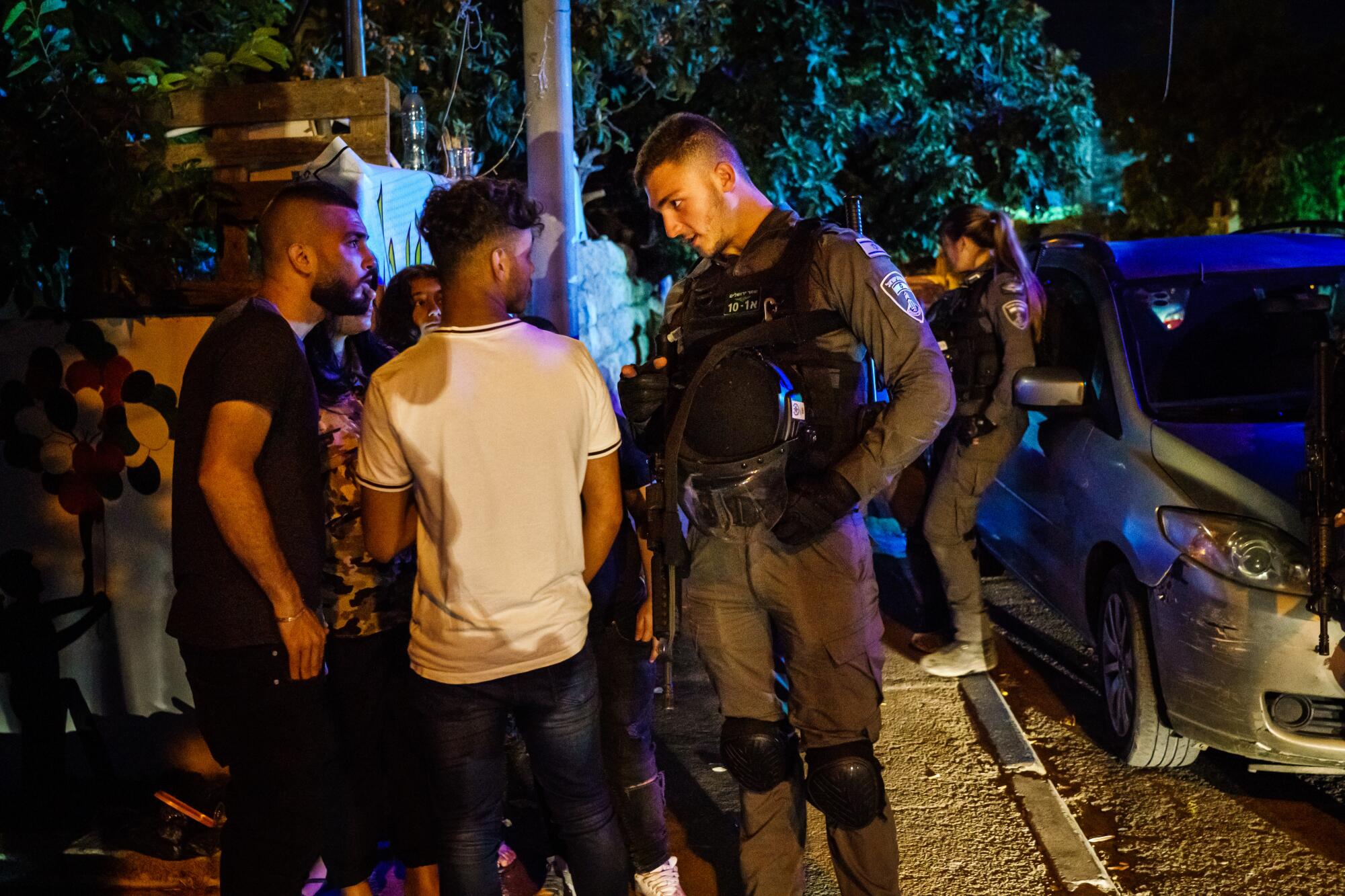
Israeli security forces remain on Lod’s streets, where Palestinian rioters set patrol cars, synagogues and homes on fire during the war last month. As for the Omari mosque, one of the Jewish ultra-nationalists’ targets, it remains barricaded, with Mohammad Abu Sahaab, a burly 30-year-old, standing sentinel to stop any break-ins. Under the shade of a tree, he and other neighbors stared at a police car that approached the group before abruptly turning away.
“Why was there anger here? It’s because everything is available to the Jews, not to the Arabs,” Abu Sahaab said.
News Alerts
Get breaking news, investigations, analysis and more signature journalism from the Los Angeles Times in your inbox.
You may occasionally receive promotional content from the Los Angeles Times.
He pointed to the asphalt lot across the street. “Even parking they give to them, not to us.”
Near him, Ghassan Mounayer, a Palestinian resident of Lod and a political aide with the Joint List, a coalition of the main Palestinian parties in Israel, complained of increasing discrimination against Arabs, with restrictions going as far as dictating where they could live in the city.
“Jews won’t sell property to us. There are no new neighborhoods where we can go,” he said, adding that though Palestinian residents made up more than a third of Lod’s population, most were crammed into the Old Quarter.
Two weeks after the last missiles and rockets flew over Gaza, there has been no return to calm in Sheikh Jarrah, near Jerusalem’s historic Old City.
A reporter in Tel Aviv describes what she’s seeing during the violence between Israelis and Palestinians.
Sometime last month, Israeli authorities set up checkpoints at the neighborhood’s entrances, checking the IDs of those who enter and turning away activists who show up in support of those living there. The main street of the neighborhood has become a social media battleground, with Palestinian activists and Jewish settlers walking by each other with smartphones filming.
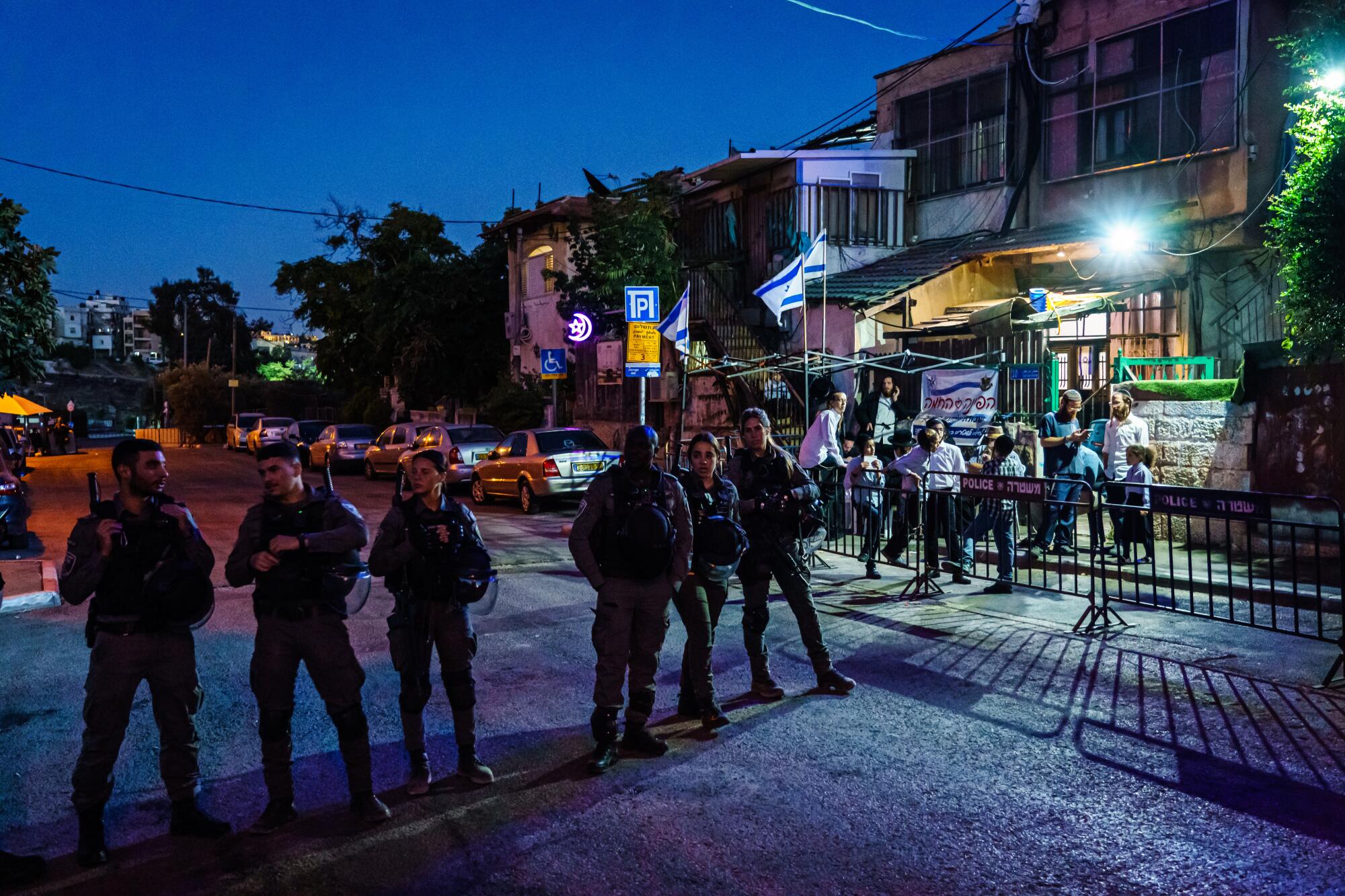
On Sunday, Israeli police arrested Muna and Mohammad Kurd, a sister and brother who have emerged as the focal point of the Sheikh Jarrah protests. (They were released a few hours later.)
The Kurds, who are 23-year-old twins, hint at a generational change underway. Like other younger Palestinians, they’re less concerned with the traditional debates over Palestinian statehood and with old-guard political parties — including Fatah, which dominates the Palestinian Authority — than they are with more general notions of equality.


They draw inspiration from movements like Black Lives Matter, employing the same rhetoric to capture the zeitgeist, as well as world attention.
Samir Mansour’s bookstore was a cultural magnet for residents of the Gaza Strip until an Israeli airstrike leveled it. Now he has to start over.
“Viewing the police as a dangerous force against us, we took this from BLM,” said Jack Saba, Abou Shehadeh’s husband and a community organizer in Jaffa. He believes that President Biden’s support for Black Lives Matter compelled him into pushing for the cease-fire between Hamas and Israel last month.
“The reason Biden couldn’t toe the line he wanted, about Israel’s right to self-defense, was BLM,” he said.
Still, the rise in attention to the plight of Palestinians hasn’t translated into official policy on the part of Israel or the U.S., its biggest ally, said Khaled Elgindy, director of the program on Palestine and Palestinian-Israeli affairs at the Washington-based Middle East Institute.
“The Biden administration is very old school on this, very out of touch with the grass roots of the Democratic Party but also members of its own caucus,” Elgindy said. He noted that during the recent war with Hamas, some progressive Democratic leaders were uncomfortable giving unqualified support to Israel.
Saba said he had no illusions “about waking up one day and being able to raise the flag of Palestine” or of restoring lands and property taken in the past.
“We’re the ones who know we need to build a new future, that 1947 isn’t coming back,” he said, referring to the year before Israel’s creation. (Arabs call Israeli statehood the nakba — the catastrophe.)
“It’s not a function if the Jews stay here or not,” Saba said. “It’s whether they choose to live here as superiors or not. That’s what this moment has taught us.”
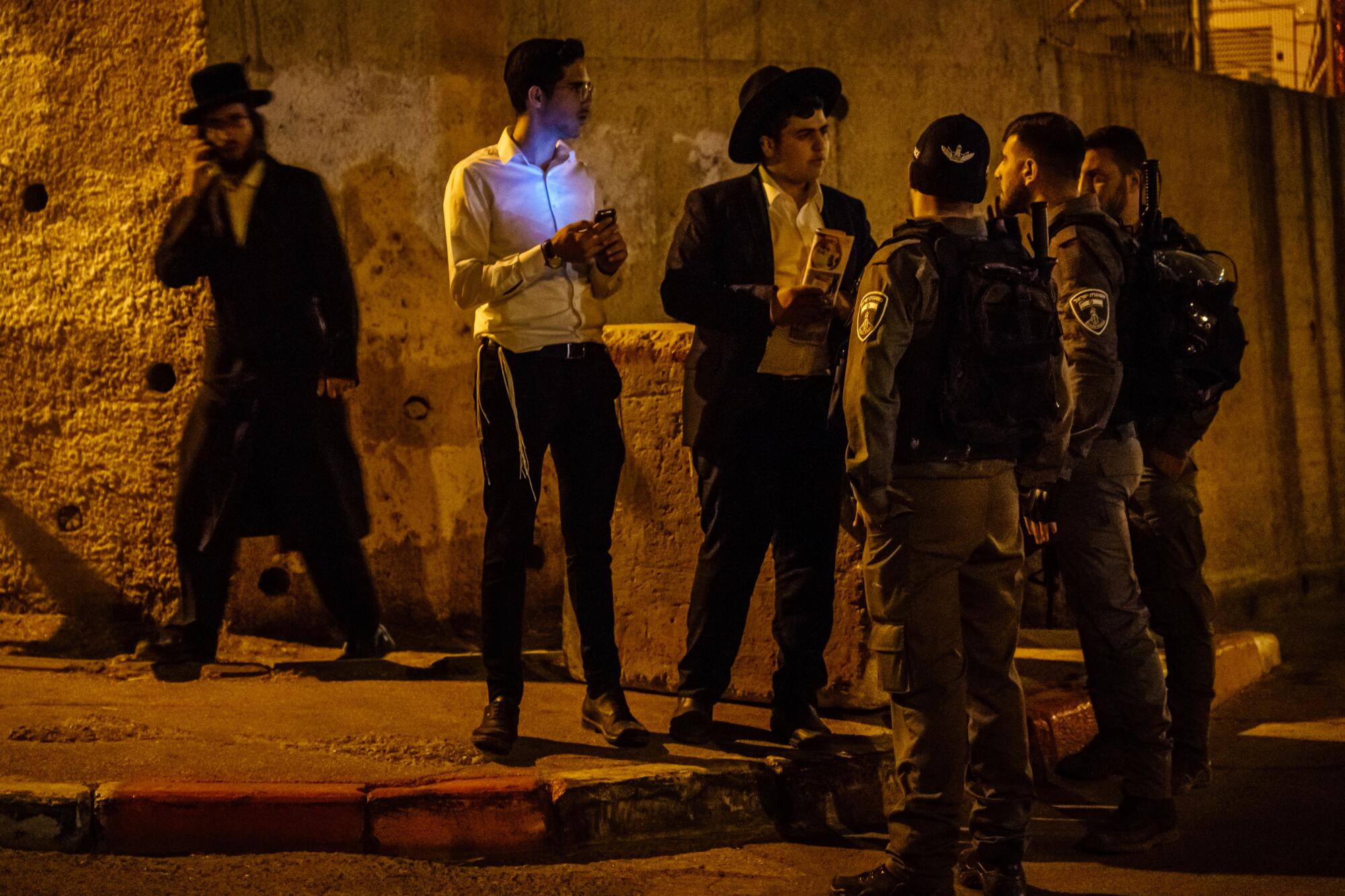
Times staff writer Laura King in Tel Aviv contributed to this report.
More to Read
Sign up for Essential California
The most important California stories and recommendations in your inbox every morning.
You may occasionally receive promotional content from the Los Angeles Times.


